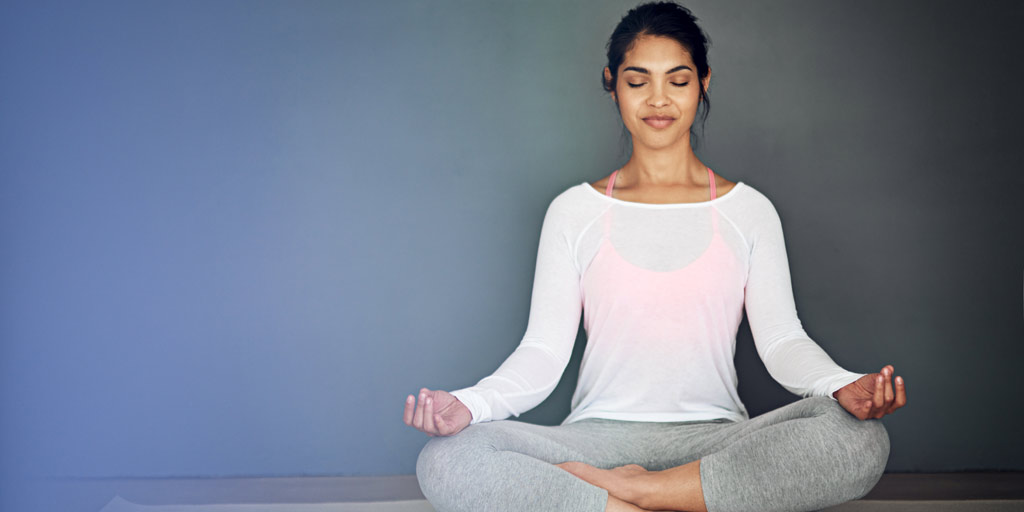Understanding the art of meditation
 CREDIT: ISTOCK (PEOPLEIMAGES)
CREDIT: ISTOCK (PEOPLEIMAGES)Understanding meditation isn't as difficult as it may seem. Read below for some key components of meditating.
Conscious cultivation of the mind has long been practised by humans for thousands of years.
Before beginning your journey to the discovery of a better state of wellbeing, understanding the characteristics of the mind is essential.
You only have one mind, yet, that one mind is comprised of multiple characteristics and functioning parts. The conscious, subconscious, and unconscious states of mind, which is the study of these terms have also been brought into modern psychology by Freud in the early 1900s that still maintain relevance regarding theories of the mind.
For our purposes here, we will be focusing on the conscious and subconscious states. Whether you have heard the term the objective and subjective mind, the waking and sleeping mind, or the voluntary and involuntary mind. All of these, and others, recognize the implications of duality in the mind.
According to Buddhist methodology, there are five categories of meditative practices that can be distinguished by orientation and method of meditation.
The first type is called the meditation of the ordinary mortal. The intent and purpose of this type of meditation is to enrich ordinary perceptions and aptness of the individual, resulting in greater efficacy and efficiency. It is also the one we will be focusing on when I walk through simple meditative practices you can do at any time to help reduce stress and anxiety.
If you, reader, are an adept student of the mind, then the next four principles may be worth noting in your quest of beingness.
The second type of meditation focuses on transcending the world opposed to dealing in conventional terms, resulting in a profound peace that is characterized by the extinction of psychological and physical burdens.
The third focuses on the cultivations of altered states of consciousness. Keep in mind, Buddhist teachings advise caution, to use these states for specific pragmatic purposes rather than self-indulgence, given that this type of meditation is said to have the ability to alter states for the purpose of breaking attachments of conceptual and perceptual conventions.
Next is dedicated to developing unprecedented capacities for the service of people and the world. Practitioners are said to use any or all of the previous methods but in a different orientation and broader context, similar in nature to self, transcendence, the positive personality trait multiple psychologists have contributed theories toward. Many believe it to be the final and sixth state to Maslow’s Hierarchy, superseding self-actualization.
The last and highest type of meditation according to Buddhist teaching is called pure clear meditation arriving at being as-is. Considered the most insightful type of meditation and the closest one’s consciousness can come to true objectivity.
Now, bringing these concepts into focus and applying them in everyday life may seem a daunting task at first, especially to a beginner.
However, a general purpose of mediation is to connect with oneself in a way of reflection and comprehension of actions and desired states in our day-to-day. By taking a moment for yourself even once a day for five to 20 minutes, meditation has been shown to have profound short-term health benefits, especially regarding the nervous system.
Dr. Herbert Benson, cardiologist, founder of the mind/body medical institute, and Harvard Professor, has coined the term relaxation response while conducting his studies in the 1960s and 1970s.
In Dr. Benson’s research, he has found that meditation has lowered the blood pressure, resting heart rate, anxiety, and blood cortisol levels in patients. Simultaneously, improving blood flow, feelings of wellbeing and even helped individuals with hypertension.
How to Meditate
Sit or lie in a comfortable position.
Begin practising in a quiet room to learn how to focus. Once you become experienced, you may even take this technique on a busy bus and find tranquility.
Start with three full breaths, slowly in, then slowly out – you control the pace, there is no rush.
With each breath, focus on a part of your body. Working from your toes, letting go of tension all the way up your legs to your stomach, then the chest, arms, hands, and fingers. Moving back up to your neck, and cheeks, then forehead, nose, lips, and tongue.
Once you find your body without tension, breathe as you would normally, focus on each breath and make no effort to control your thoughts. At first you may find yourself wandering or thinking of the day or a pressing concern, but, just continue to breathe in and out just as it came.
Soon you will find that with practice, you will be able to clear your mind of worry for moments at a time, then consistently – relaxing the body and mind to help you face any obstacle with clarity and patience.
You may also use guided meditations to help you start, some find it comforting to listen to audio than remain in complete silence, and that’s okay too.
There is truthfully no right or wrong way to take time for yourself, these are simply tried methods that have been passed along for generations. Nowadays, you can find many forms of spiritual healing and guidance with a common goal of personal health and wellbeing.
Choose what will resonate with you, as unique as you are, you deserve to love yourself.














